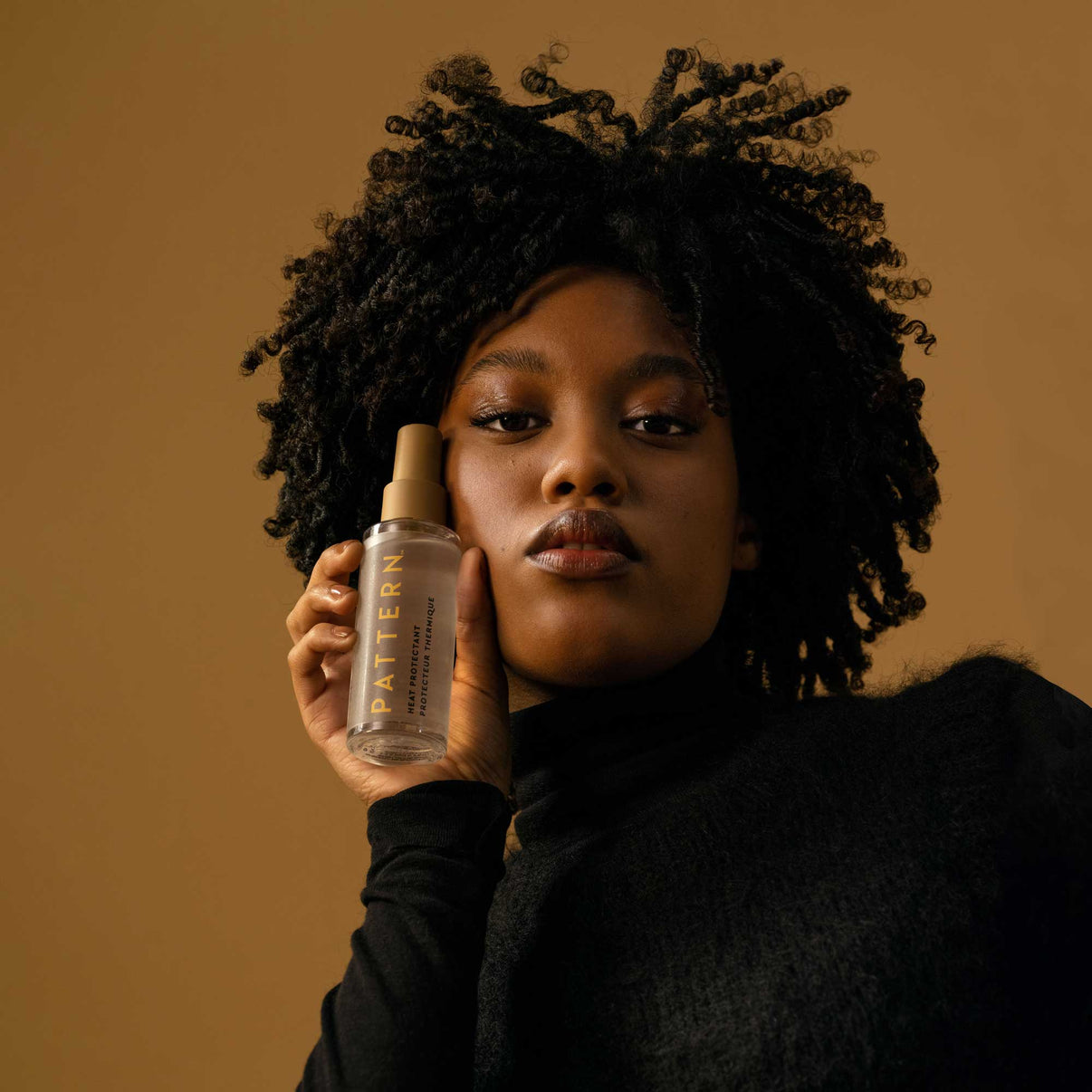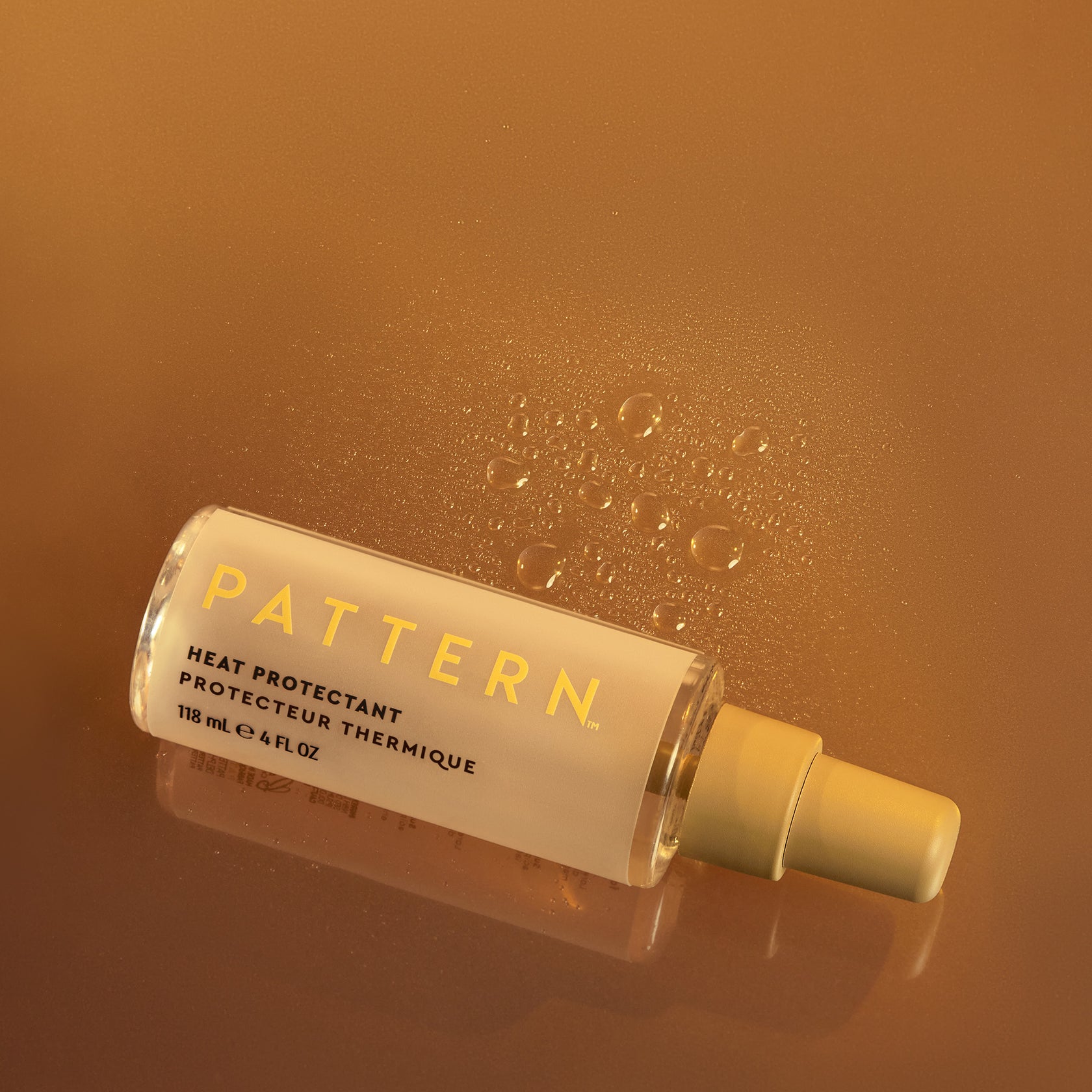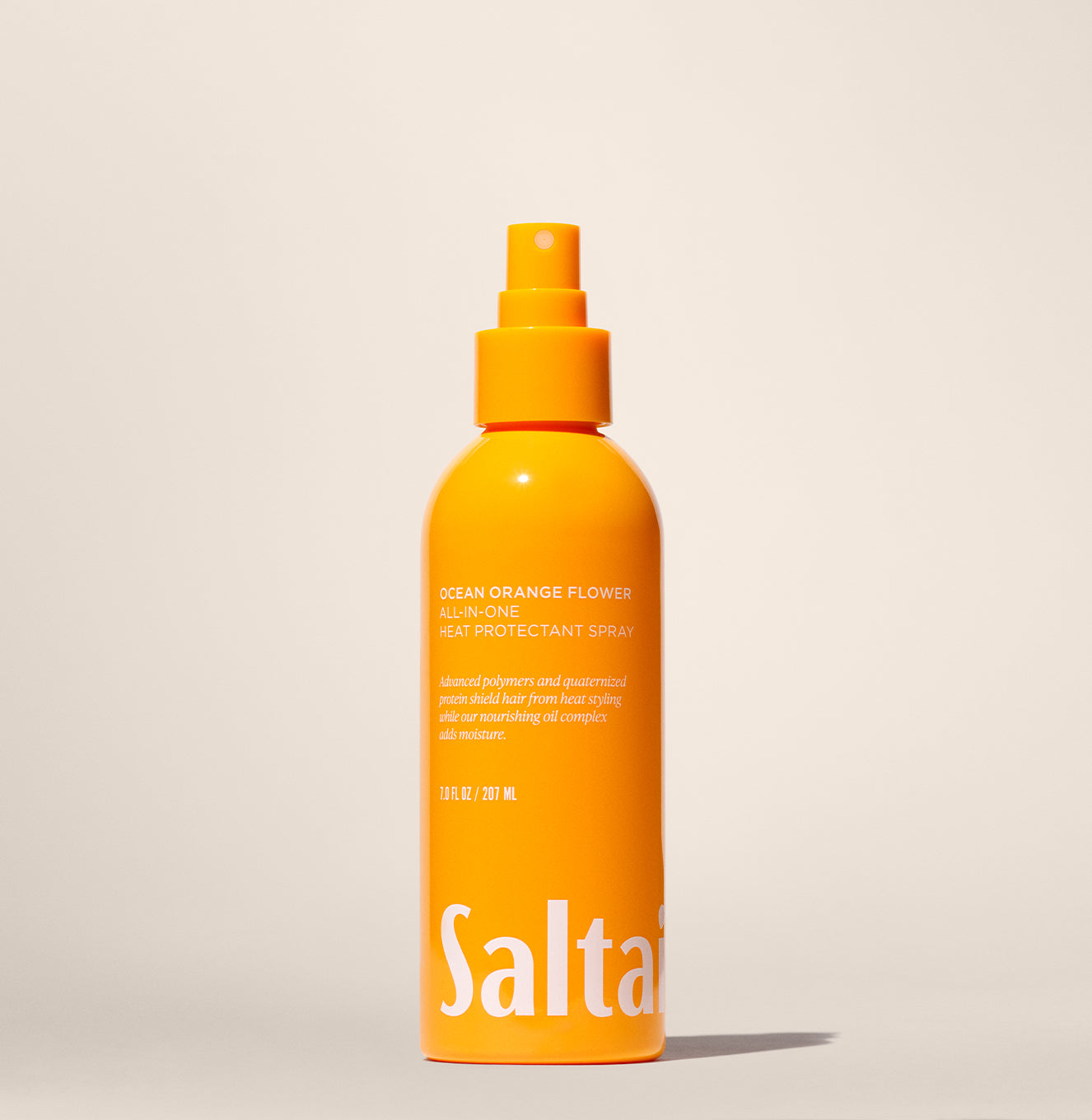Heat Protectant: Your Secret Weapon For Salon-Quality Hair At Home
When it comes to styling your hair, heat is both your best friend and worst enemy. While flat irons, curling wands, and blow dryers help you achieve that perfect look, they can also wreak havoc on your strands. That's where heat protectant comes in – the unsung hero of your hair care routine. Think of it as a shield between your hair and those scorching-hot styling tools. But what exactly is heat protectant, and why should you care? Let's dive in and find out!
You might be thinking, "Do I really need another product in my already-crowded bathroom cabinet?" The answer is a resounding yes. Heat protectant isn't just another buzzword in the beauty industry; it's a game-changer. Whether you're a daily styling enthusiast or someone who occasionally breaks out the curling iron, this product can make a world of difference in maintaining healthy, shiny hair.
Now, before we get into the nitty-gritty, let's set the record straight. Heat protectant isn't just for people with long, flowing locks. No matter your hair type or length, if you're using heat tools, you need this. So, whether you're rocking a pixie cut or sporting waist-length waves, keep reading because this info is about to level up your hair game.
- Hannah Bagshawe The Rising Star Redefining Success In The Spotlight
- Naturi Naughton The Rising Star Shining Bright In Hollywood
What Exactly is Heat Protectant?
Alright, let's break it down. Heat protectant is a styling product designed to create a barrier between your hair and the intense heat generated by styling tools. It's like sunscreen for your strands, preventing damage caused by temperatures that can exceed 450°F. But here's the kicker – it's not just about preventing breakage. Heat protectant also helps maintain your hair's natural moisture balance, keeping it soft and shiny.
How Does It Work?
Think of heat protectant as a superhero cape for your hair. When you apply it, it forms a protective layer that reduces the transfer of heat from your styling tools to your strands. This protective barrier helps prevent protein loss and keeps your hair from becoming brittle. Plus, it often contains ingredients like silicones and polymers that add shine and smoothness to your locks.
Why You Need Heat Protectant in Your Life
Let's get real for a second. If you're using heat tools without protection, you're basically setting your hair on fire – figuratively speaking, of course. Heat damage leads to split ends, breakage, and a dull, lifeless appearance. Who wants that? Heat protectant not only prevents these issues but also makes your styling process smoother and more efficient.
- How Old Is Emma Watson Discover The Age And Journey Of A Beloved Icon
- Cooling Dog Bed The Ultimate Solution For Your Pups Summer Comfort
Benefits Beyond Protection
- Reduces frizz and flyaways
- Enhances shine and silkiness
- Improves heat tool glide for easier styling
- Protects color-treated hair from fading
Choosing the Right Heat Protectant
Not all heat protectants are created equal. With so many options on the market, finding the perfect one for your hair type and styling needs can feel overwhelming. But don't worry, we've got you covered. Here are a few things to consider when choosing your heat protectant:
Factors to Keep in Mind
First off, think about your hair type. If you have fine or thin hair, you'll want a lightweight formula that won't weigh your strands down. For thick or coarse hair, a more substantial product will provide better coverage and protection. Also, consider whether you need additional benefits like UV protection or humidity resistance.
Applying Heat Protectant Like a Pro
Now that you've picked the perfect product, it's time to put it to work. Proper application is key to getting the most out of your heat protectant. Start by applying it to damp or towel-dried hair for maximum absorption. Then, distribute it evenly using your fingers or a wide-tooth comb. Remember, a little goes a long way, so don't overdo it.
Tips for Maximum Effectiveness
- Always apply before blow-drying
- Focus on the mid-lengths and ends
- Reapply if you're restyling
Common Myths About Heat Protectant
There's a lot of misinformation out there about heat protectant, and we're here to set the record straight. One common myth is that you don't need it if you only style your hair occasionally. Wrong! Even minimal heat exposure can cause damage over time. Another misconception is that all heat protectants are heavy and greasy. With advancements in technology, there are plenty of lightweight options available.
Debunking the Myths
The truth is, heat protectant is a must-have for anyone who uses heat tools. It's not just for daily styling enthusiasts; it's for anyone who cares about maintaining healthy hair. Don't let these myths keep you from protecting your strands.
The Science Behind Heat Damage
So, what exactly happens when you expose your hair to high temperatures without protection? Heat causes the water molecules inside your hair shaft to evaporate rapidly, leading to structural damage. This process weakens the hair's internal bonds, making it more prone to breakage. That's why heat protectant is crucial – it slows down this process and helps preserve your hair's integrity.
Understanding the Impact
Studies have shown that using heat protectant can reduce protein loss by up to 50%. That's a significant difference when it comes to maintaining strong, healthy hair. Plus, it helps maintain the natural moisture balance, keeping your strands soft and manageable.
Heat Protectant for Different Hair Types
Not all hair types respond the same way to heat protectant. Fine hair needs lightweight formulas to avoid weighing it down, while thick hair benefits from more substantial products for comprehensive coverage. Curly hair, on the other hand, requires products that enhance definition while providing protection.
Tailoring to Your Needs
When choosing a heat protectant, consider your specific hair concerns. For example, if you have color-treated hair, look for products that offer UV protection to prevent fading. If you live in a humid climate, opt for formulas that combat frizz and flyaways.
DIY Heat Protectant Solutions
If you're feeling adventurous, you can even make your own heat protectant at home. Ingredients like coconut oil, argan oil, and aloe vera gel can provide natural protection against heat damage. Plus, DIY solutions allow you to customize your product to suit your specific needs.
Creating Your Own Formula
Mix a few drops of essential oils with a carrier oil like jojoba or almond oil for a simple yet effective DIY heat protectant. Not only is it cost-effective, but it also gives you peace of mind knowing exactly what's going on your hair.
Heat Protectant Alternatives
While heat protectant is the gold standard for protecting your hair from heat damage, there are other ways to minimize the impact of styling tools. Reducing the frequency of heat styling, using lower temperature settings, and opting for air-drying whenever possible can all contribute to healthier hair.
Exploring Other Options
Consider incorporating heatless styling methods into your routine, such as braids or twists, to give your hair a break from the heat. These techniques not only protect your strands but also add texture and variety to your look.
Conclusion: Protect Your Hair, Protect Your Peace
In conclusion, heat protectant is an essential component of any hair care routine that involves heat styling. It prevents damage, enhances shine, and makes styling easier and more efficient. By choosing the right product, applying it correctly, and understanding the science behind heat damage, you can keep your hair looking its best.
So, what are you waiting for? Grab your favorite heat protectant and start treating your hair right. And don't forget to share this article with your friends – because nobody deserves fried hair. Whether you're a seasoned pro or a styling newbie, heat protectant is the secret weapon you didn't know you needed.
References:
- American Academy of Dermatology
- Journal of Cosmetic Science
- International Journal of Trichology
Table of Contents:
- What Exactly is Heat Protectant?
- Why You Need Heat Protectant in Your Life
- Choosing the Right Heat Protectant
- Applying Heat Protectant Like a Pro
- Common Myths About Heat Protectant
- The Science Behind Heat Damage
- Heat Protectant for Different Hair Types
- DIY Heat Protectant Solutions
- Heat Protectant Alternatives
- Conclusion



Detail Author:
- Name : Danika Hamill
- Username : chauncey20
- Email : vkertzmann@schroeder.biz
- Birthdate : 2000-07-01
- Address : 4134 Cremin Islands Apt. 662 South Kobe, WI 55127-0341
- Phone : 1-847-430-7075
- Company : Brakus Group
- Job : Word Processors and Typist
- Bio : Deserunt provident quod architecto qui sed. Minus consequatur incidunt officia consequatur unde. Eos et porro placeat.
Socials
twitter:
- url : https://twitter.com/dhickle
- username : dhickle
- bio : Possimus a beatae aspernatur quaerat. Iure non excepturi aut odio. Repellat et sint voluptas molestias.
- followers : 3316
- following : 2892
tiktok:
- url : https://tiktok.com/@hickle2015
- username : hickle2015
- bio : Nulla aut qui explicabo aut velit.
- followers : 1299
- following : 2642
linkedin:
- url : https://linkedin.com/in/dejuanhickle
- username : dejuanhickle
- bio : Labore alias aut sunt expedita qui incidunt aut.
- followers : 5037
- following : 2116
instagram:
- url : https://instagram.com/hickled
- username : hickled
- bio : Et nostrum quo eaque nisi illo iure. Nemo pariatur et dolor illum id.
- followers : 6541
- following : 2746
facebook:
- url : https://facebook.com/dejuan_hickle
- username : dejuan_hickle
- bio : Suscipit hic ex facere suscipit. Dolore tempore est nam sint.
- followers : 5427
- following : 2744